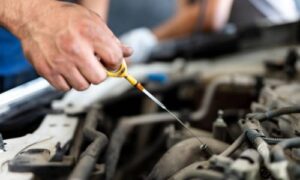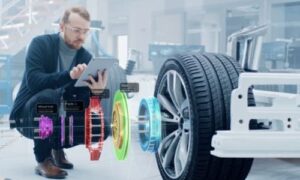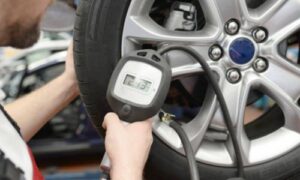Introduction:
Preventative maintenance is a proactive asset management approach involving regular inspections, repairs, and upkeep to prevent equipment breakdowns and ensure optimal functionality. This article will explore the 15 benefits of incorporating preventative maintenance strategies into your routine, whether for machinery, vehicles, or other assets.
Increased Equipment Reliability:
Regular maintenance reduces the likelihood of unexpected breakdowns, ensuring your equipment operates reliably when needed. This can minimize costly downtime and production delays, leading to increased efficiency and productivity for your business. Additionally, preventative maintenance can extend the lifespan of your assets, saving you money in the long run on costly repairs or replacements.
Extended Equipment Lifespan: Preventative Maintenance
Proper maintenance enhances the longevity of assets, minimizing the need for premature replacements and saving on long-term costs. It also helps to preserve the value of your equipment, allowing you to maximize your return on investment when it comes time to upgrade or sell. Regular maintenance can also help to ensure that your equipment is operating at peak performance, reducing the risk of breakdowns and unexpected failures. This proactive approach can give you peace of mind, knowing that your assets are well-maintained and reliable for your business operations.
Cost Savings:
Preventing major breakdowns through routine maintenance is often more cost-effective than dealing with extensive repairs or replacements. Additionally, regular maintenance can save you money in the long run by delaying the need for costly replacements. By investing in preventative maintenance now, you can avoid expensive downtime and keep your business running smoothly.
Improved Safety:
Well-maintained equipment is less likely to pose safety hazards, creating a secure working environment for employees. This can help reduce the risk of accidents and injuries, saving you money on workers’ compensation claims and lost productivity. Regular maintenance can also help ensure that your equipment meets industry safety standards and regulations.
Enhanced Energy Efficiency: Preventative Maintenance
Regular maintenance can help ensure your equipment operates at peak efficiency, reducing energy consumption and lowering utility costs. This saves you money in the long run, helps reduce your carbon footprint, and contributes to a more sustainable business operation. Regular checks and adjustments contribute to improved energy efficiency, leading to reduced energy consumption and operational costs.
Minimized Downtime:
Regular maintenance can help identify and address potential issues before they escalate into major problems, reducing the likelihood of unexpected breakdowns and costly downtime. This proactive approach to equipment upkeep can help keep your business running smoothly and efficiently. Scheduled maintenance helps identify and address potential issues before they escalate, minimizing downtime and maintaining productivity.
Optimized Asset Performance:
Preventative maintenance ensures that assets consistently perform at their peak, meeting operational requirements efficiently. By staying ahead of maintenance needs, businesses can avoid costly repairs and replacements that can disrupt operations and impact the bottom line. Additionally, regular upkeep can extend the lifespan of equipment, maximizing return on investment.
Compliance with Regulations: Preventative Maintenance
Adhering to maintenance schedules helps meet industry regulations and standards, preventing legal and regulatory issues. Furthermore, compliance with rules can enhance the business’s reputation and build trust with customers and stakeholders. Overall, preventative maintenance is essential for ensuring smooth operations and long-term success.
Improved Resale Value:
Regular maintenance can also increase equipment’s resale value, making it more attractive to potential buyers. Additionally, a well-maintained asset can command a higher price in the secondary market, providing a better return on investment in the long run. Well-maintained assets generally have higher resale value, providing a return on investment when the time comes for upgrades or replacements.
Enhanced Product Quality: Preventative Maintenance
Preventative maintenance can also enhance product quality, as well-maintained equipment is less likely to break down or produce faulty products. This can help businesses maintain a positive reputation and customer satisfaction levels. Additionally, high-quality products can lead to increased sales and profitability in the long term.
The global automotive predictive maintenance market was valued at USD 18.9 billion in 2022.
Reduced Emergency Repairs: Preventative Maintenance
By implementing preventative maintenance measures, businesses can reduce the need for costly emergency repairs that can disrupt operations and lead to financial losses. This proactive approach can help save time and money in the long run, ultimately improving overall efficiency and productivity. Proactive maintenance reduces the need for emergency repairs, preventing costly disruptions to your business operations.
Better Planning and Budgeting:
By consistently maintaining equipment and facilities, businesses can better predict when repairs or replacements will be needed, allowing for more accurate budgeting and planning. This can help companies to allocate resources more effectively and avoid unexpected expenses impacting financial stability. Ultimately, proactive maintenance can lead to improved operational efficiency and long-term cost savings.
Increased Employee Satisfaction:
By ensuring that equipment is properly maintained, businesses can create a safer and more productive work environment for employees. This can increase job satisfaction and employee morale, improving retention rates and productivity. Employees working with well-maintained equipment experience fewer disruptions, increasing job satisfaction.
Environmental Impact:
Proactive maintenance also helps reduce the environmental impact of businesses by preventing unnecessary waste and emissions. By keeping equipment in optimal condition, companies can minimize their carbon footprint and contribute to a more sustainable future. Optimized equipment performance and reduced energy consumption contribute to a lower environmental footprint.
Informed Decision-Making:
Proactive maintenance provides businesses with valuable data on equipment performance, allowing for informed decision-making regarding repairs or replacements. This data-driven approach can help organizations allocate resources more effectively and strategically plan for future investments in equipment. Regular maintenance provides valuable data on asset performance, enabling informed decision-making regarding repairs, upgrades, or replacements.
Conclusion:
Incorporating preventative maintenance into your operational strategy brings many benefits, from cost savings and improved safety to increased equipment reliability and extended asset lifespan. Embracing a proactive approach to maintenance not only ensures the smooth operation of your assets but also sets the foundation for sustainable growth and success in the long run.
FAQs About Preventative Maintenance
What is Preventative Maintenance (PM)?
Preventative maintenance, often termed PM, is a proactive approach to maintaining equipment and assets by regularly inspecting, servicing, and repairing them to prevent breakdowns and ensure optimal performance.
Why is Preventative Maintenance Important?
Preventative maintenance is crucial for increasing equipment reliability, extending asset lifespan, reducing downtime, and minimizing long-term operational costs.
What are the Key Components of a Preventative Maintenance Program?
A comprehensive PM program includes scheduled inspections, lubrication, parts replacement, calibration, and other activities necessary to keep equipment in top working condition.
How Often Should Preventative Maintenance be Conducted?
The frequency of PM activities depends on the type of equipment and usage. It’s scheduled at regular intervals, ranging from daily, weekly, monthly, to annually.
What are the Common Types of Preventative Maintenance?
Common types include time-based maintenance (scheduled at fixed intervals), usage-based maintenance (performed after a certain amount of operation), and condition-based maintenance (performed when equipment conditions warrant it).
What are the Benefits of Implementing Preventative Maintenance?
Benefits include increased equipment reliability, extended asset lifespan, cost savings, improved safety, and enhanced operational efficiency.
Read More:
The Importance of Timely Windshield Replacement: Safety First






